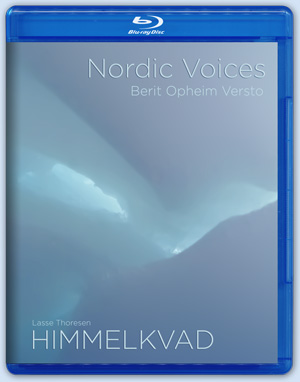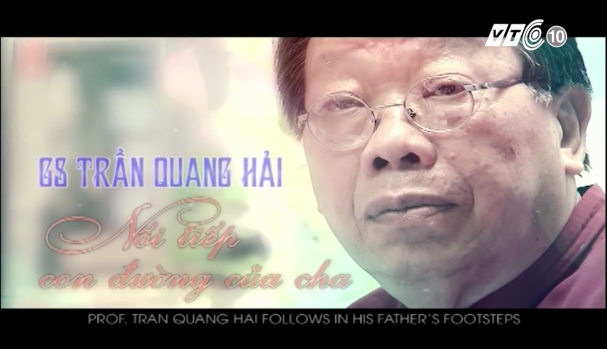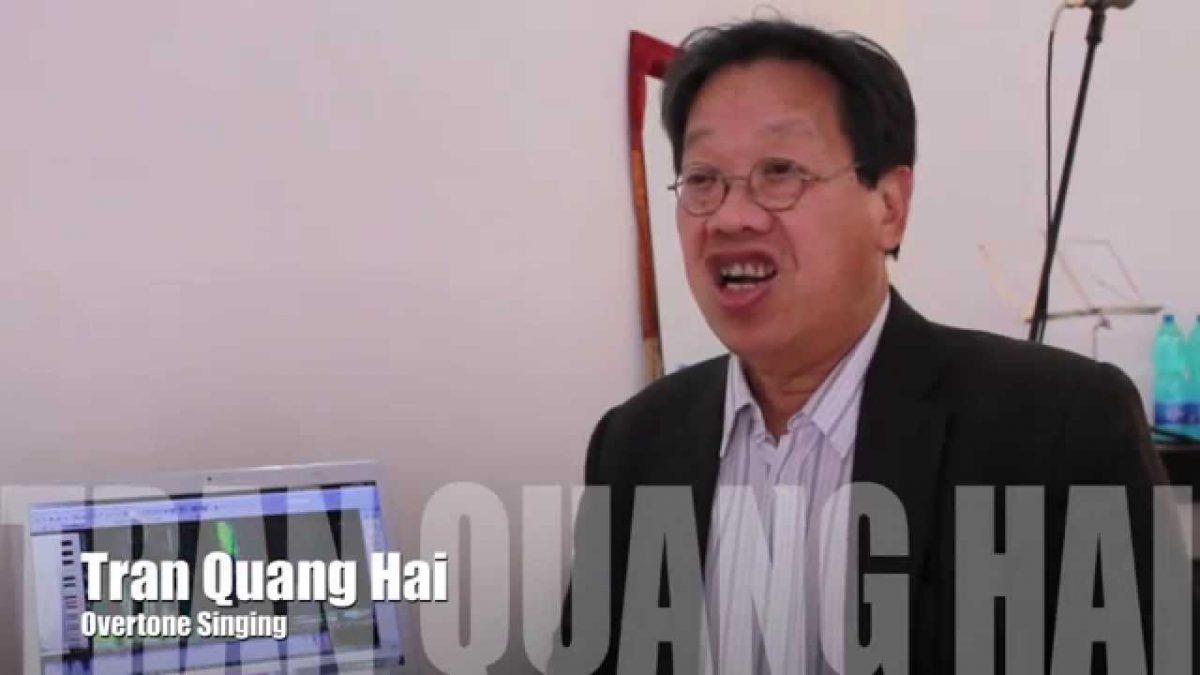HIMMELKVAD , composition by LASSE THORESEN , performed by Nordic Voices
Nordic Voices performing Lasse Thoresen
Photo: Lars Igesund
Himmelkvad
Celebrated vocal ensemble Nordic Voices is currently out on its promo tour for their new outing ‘Himmelkvad’, a critically acclaimed album presenting Norwegian composer Lasse Thoresen’s unique vocal universe. MIC Norway takes a closer look at the cutting-edge vocal ensemble and ground-breaking composer.
08.02.2012 | By: Hilde Holbæk-Hanssen
The same things happen whenever we switch to overtone singing, be it in Luzerne or in an Ohio junction; people will always crane their necks, searching for those flutes that they hear but can’t see, says Frank Havrøy, baritone in vocal sextet Nordic Voices.
The celebrated vocal ensemble is now heading out on its promo tour for their new outing ‘Himmelkvad’ (Heavenly Sounds), an album that presents Norwegian composer Lasse Thoresen’s vocal universe. Nordic Voices performs his Opus 42, a work that earned the composer the 2012 Nordic Council Music Prize. The new release also features vocalist Berit Opheim Versto performing Thoresen’s ‘Sacred Songs’ – six Bahá’i prayers.
Nordic Voices – Himmelkvad on Spotify
Since the late 70s, Thoresen has focused on expanding the vocal palette singers utilize as an addition to the operatic style which has been prevalent in classical singing. His quest began in 1977 when he recruited folk ballad singer Birgitte Grimstad as soloist for a work commissioned for the opening of the Oslo Concert Hall. Says Thoresen: – She had that non-vibrato voice I was searching for – a voice that produces more overtones than the artificial voice classical vocalists employ.
Berit Opheim represented a new, major inspirational source when she enrolled at the vocal course at of the Norwegian Academy of Music where Thoresen served as professor. Opheim came from a folk music background and mastered the traditional Norwegian vocal style ‘kveding’, a singing style that has never surrendered to the limitations of the tempered scale. Thoresen found this to be highly interesting and a close collaboration ensued, resulting in a number of works. 1998 saw Opheim premiering his cantata Fire and Light at the Warsaw Autumn; the work not only featured the use of quarter tones, even eight tones were introduced. – It was pretty challenging, Opheim admits.
As a classically trained vocalist, Opheim effortlessly moves between performance styles using quarter tones as found in Norwegian traditional folk music as well as conventional half- and whole tone harmony in classical pieces, improvised sessions and early music performances. – It’s not as difficult as it might sound like, Opheim explains. – One has to change the mind-set, realizing that traditional folk music is a style that differs from the others. For me, it was inspiring to work with a professor of composition who was genuinely interested in folk music; back then there weren’t too many of them around!
Traditional folk music was not the sole inspirational source Thoresen turned to: For a number of years he focused on the French spectral composition scene, in particular composer Guy Reibel. During a 2002 stint as lecturer at Paris’ Conservatoire Superieure, Thoresen took on inspiration from Reibel’s works featuring body energy based approaches to vocal improvisation; Jeux Vocaux, as well as David Hykes; one of the true masters of contemporary overtone singing.
Thus, the founding idea for the Concrescence Project was conceived. A key event for the project came when the Nordic Voices ensemble marched into Thoresen’s office to discuss the future of classical singing. The ensemble was aware of the composer’s ideas for expanding classical singers’ timbre palette and was keen on getting involved.
Says the ensemble: – The talks went on quite longer than first expected, and it became apparent that we shared the same views; it should be possible to add something to what we felt was a rigid classical vocal paradigm. Lasse had a clear vision of what this ‘something’ should be, and we realized we were now embarking on a project that had a much wider scope than the projects we had focused on previously. The project was titled Concrescence, and backed by the Ultima Oslo Contemporary Music Festival and the Norwegian Academy of Music we were soon immersed in the intricacies of overtone singing. Parallel to this, a new sonorous landscape evolved in front of us and we realized we were on a path that could lead us to new forms of singing, a vocal style that the world had yet to see or hear.
The project progressed rapidly. Aided by such vocal masters as Vietnamese performer Tran Quang Hai, Nordic Voices steadily progressed, mastering the various aspects of overtone singing. Intensive microtonal ear training, taught by Gro Shetelig of the Norwegian Academy of Music, was soon on the ensemble’s hectic schedule. With a basis in this new sonorous universe, Nordic Voices now commissioned new works by six Norwegian composers, all of which were premiered at the 2006 Ultima Oslo Contemporary Music Festival.
Says Thoresen: – Nordic Voices were now capable of doing amazing things – exactly what I had been envisioning that a vocal ensemble could do.
Classical singers are hardly known for being willing to expand their tonal and technical skills in unconventional ways. The fear of wearing out one’s voice is prevalent – and often rightfully so. According to Nordic Voices soprano (and opera singer) Tone Elisabeth Braaten, an unconventional approach to classical singing can also have positive benefits for one’s voice. Says Braaten: -I feel that my voice is much more flexible now than before. As long as it doesn’t hurt it won’t harm me!
Baritone Frank Havrøy feels that focusing on this project has also taught the singers a methodology for rehearsing new sonorous effects. – Navigating in uncharted waters is fun, says Havrøy. This process has also taught us that there exists a kinship between various traditional vocal folk music styles throughout the world.
The Concrescence Project continues its development. A number of singers, including one of Europe’s prime choirs; the Latvian Radio Choir, now master the tonal and vocal-technical skills necessary to tackle a project of Concrescence’s calibre. In Frank Havrøy’s opinion, new generations of young composers and vocalists now represent a much greater openness towards unconventional thinking. During the current US tour, Nordic Voices are to hold crash courses in overtone singing in Lakeville and Annapolis. On home turf, Thoresen is heavily involved in the training of composers at the Norwegian Academy of Music, and is actively encouraging students to write works for vocal ensembles.
When asked whether if new vocal styles will be added to the on-going project, Thoresen replies with a sly smile: – I’ve got some ideas…
Notify a friend | Print story
| By: Hilde Holbæk-Hanssen
Share the story on:
Share on twitter Share on facebook Share on myspace Share on digg | More Sharing ServicesMore
Nordic Voices performing Lasse Thoresen

Lasse Thoresen
Composer, Professor
Lasse Thoresen is Professor at the Norwegian Academy, where he has thaught composition, electrophny and sonology snce 1975. He studied composition under Finn Mortensen, Oslo Music Conservatory, electrophony and composition at the Institute of Sonology in the Netherlands. His works have achieved high recognition in Norway and internationally, and he has received a number of important awards such as the Nordic Council Music Prize, the Work of the Year from the Society of Norwegian Composers, Norwegian Critics Award, Norwegian Grammy, the Lindeman Award, the Foundation Samii-Housseinpour Price (Belgium), and Prix Jacques DURAND (France). His music has absorbed influences from archaic Norwegian folk music and ethnomusic” in general, from French spectral music and “Musique Concrete”, and from Harry Partch’s tonal system “Just Intonation”. Under the headline Aural Sonology he has developed a theory of emergent musical forms, and methods of aural analysis of electroacoustic music. (For more information see: Biography – from mic.no)
Web: http://www.lassethoresen.com
Email: lasse@lassethoresen.com
Born: 18.10.1949 (Oslo)



